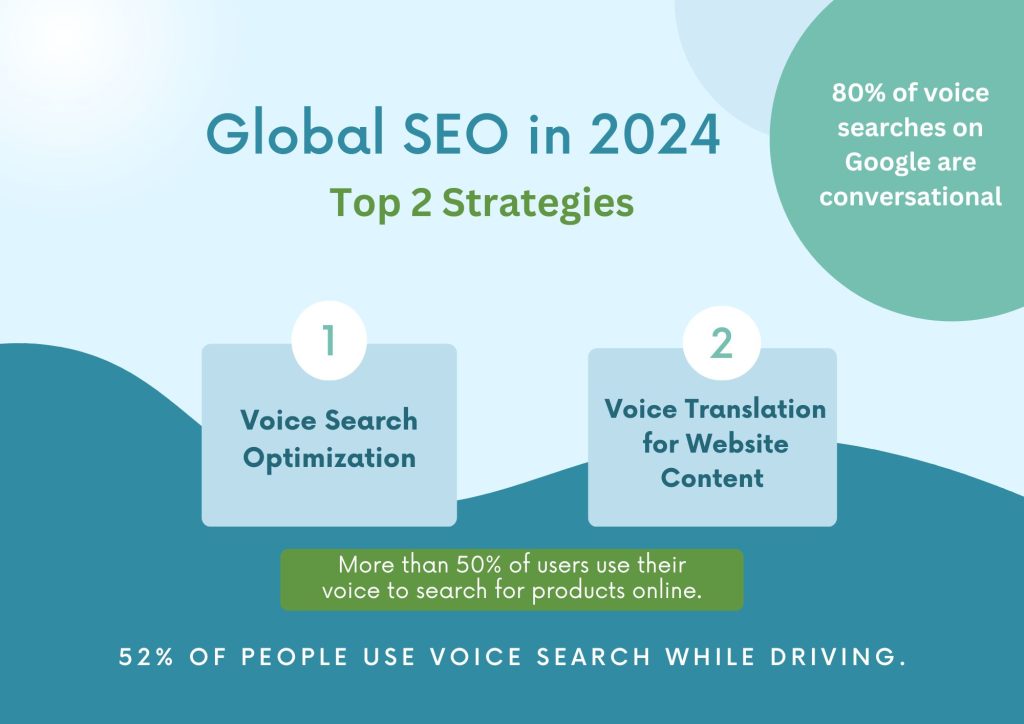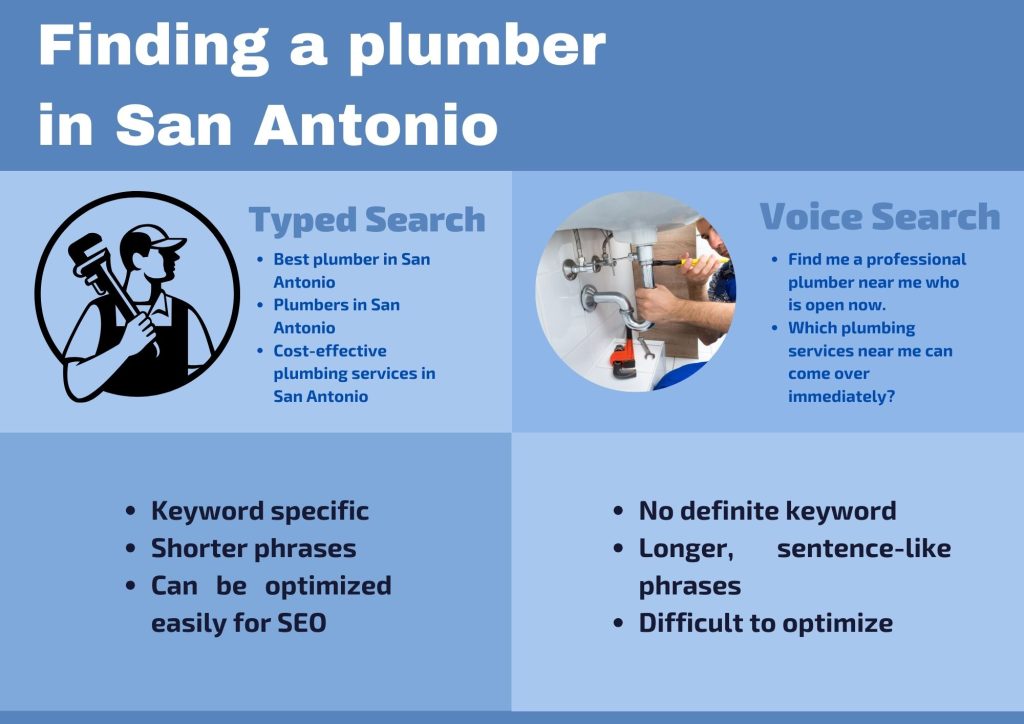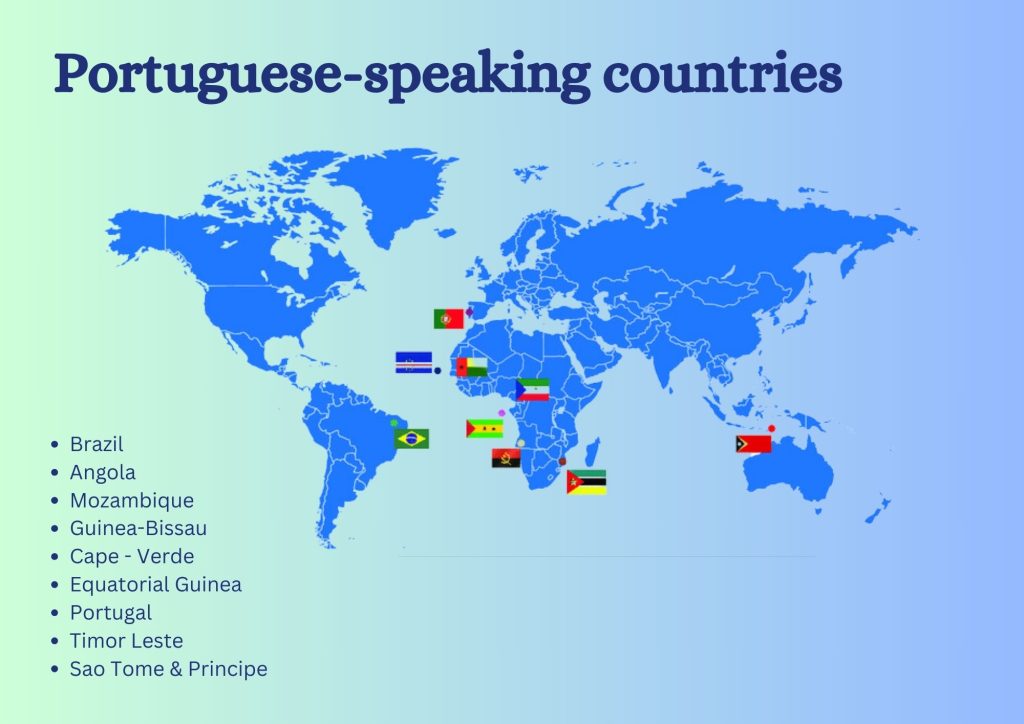With about 2 billion websites online today, competition for ranking high in search results is fiercer than ever. As a result, search engine optimization (SEO) has become crucial for businesses trying to reach customers and gain visibility faster.
SEO helps make a website more discoverable by search engines like Google and Bing. If you have an online business waiting to take over the global market, you need an upgraded global SEO strategy that will do the trick. It will include content marketing, content updating, technical SEO, on-page optimization, voice search SEO, voice translation, and many other elements. With a combination of all these functions, the pages of your website will show up higher in search results for relevant queries. And the higher a page ranks for a search term, the more likely searchers will find and visit that page, thus improving your website visibility.
Global SEO can take optimization a step further by adapting websites for international audiences. Internet users in different countries speak many languages. Translating a website is essential for tapping into new markets.
This is where voice translation and voice SEO will come into use.

Let us now delve into the effectiveness and requirements of one of the most significant global SEO strategies – voice search SEO.
The Significance of Voice Search and Voice Translation in Global SEO
Invented in 2011 and 2014 respectively, Siri and Alexa are voice assistants that have propelled voice searches on Google and Bing. These searches now make up a growing share of all searches, including non-English languages. And that is exactly what inspires the voice translation factor.
Translating website content into other languages helps businesses improve their visibility and appeal to voice searchers worldwide. According to the latest statistics, Mandarin is the most popular spoken language in the world after English with 1.1+ billion speakers, followed by Spanish (548+ million) and French (274+ million). Russian and Portuguese also hold significance with 260 and 279 million (approximately) speakers in the world.
Voice translation for website content thus holds high prominence in SEO with more people using voice searches to look for products/services online. If you have an online business that targets a global audience base, it is crucial to integrate voice translation into your SEO strategies to rank higher on the SERPs.
A Few Trends in Voice Searches To Look Out For
As mentioned earlier, smart speakers and voice assistants like Alexa, Siri, and Google Assistant have seen rapid adoption in recent years. More and more people use voice search on their mobile devices today. They also use it on smart speakers to find information about brands online.
According to a study by Synup, the number of these eligible voice search assistants will probably double by the end of 2024, reaching about 8.4 billion. Further, 80% of these voice searches will be conversational, with a surge in local searches, which now make up about 76% of all voice searches online.
Why this surge, if you may wonder?
Well, voice search has some key advantages over typing –
- It’s hands-free, convenient, and safe, especially in situations where you cannot rule out safety, like driving.
- It’s easier for multitasking, and faster. You just have to tap into a search engine and talk. What can be easier than that?
- Last but not least, voice interfaces continue to improve and will keep improving to offer maximum convenience to searchers.
However, the gradual rise of voice search creates both opportunities and challenges. It affects businesses that want to improve their search visibility. Queries are typically longer and more conversational than typed keywords. The words people speak don’t always match the words they would type. Hence, optimizing voice searches in your SEO requires specific modifications, in sync with conversational tones and multilingual trends.
So the bottom line is, as more searches continue to happen by voice, SEO strategies for businesses looking forward to enhancing their online presence and brand visibility will need to evolve, faster than ever before.
What are The Challenges of Voice SEO
Voice search presents some unique challenges for search engine optimization. The queries entered through conversational tones tend to be longer than typed search queries. People speak way differently than they type. So their voice search terms may not match a website’s text search terms, posing challenges in keyword optimization and overall SEO.
For example, someone may say “OK Google, find me a plumber in my area who is open now.” The voice query is long, conversational, and doesn’t use typical SEO keywords. However, the website may be optimized with keywords. For example, “emergency plumbing service Phoenix” is good but not “find me a plumber.”

The gap between how people speak and how websites are optimized is, at present, wider than it seems. It hinders voice searchers from finding the right results, as well as prevents websites from getting on the radar of their target audience through search queries. A website may not show up in voice search results if it hasn’t been optimized for long-tail, natural queries. It doesn’t matter how excellent your content is, or how brilliantly you have optimized it for relevant keywords. If your website content doesn’t include the terms that one uses during a natural conversation with the voice assistants, you will fail in the SEO game.
Another challenge is voice search results are often displayed differently than text search engine results pages (SERPs). With voice search, there is no traditional 10-blue link SERP. Results are displayed audibly or on smart devices. This means high rankings don’t guarantee visibility and click-throughs as they do in text searches.
So, what can you do to overcome this?
Voice SEO requires adapting on-page content but also website architecture and technical SEO to optimize for featured snippets, people also ask (PAA), people also search for (PASF) knowledge panels, and other rich result formats.
Just targeting keywords is no longer enough to gain visibility, and even more, CONVERT. Businesses have to take a holistic approach to make their sites discoverable and usable for voice queries.
Reasons to Opt for Voice Translation in SEO
Businesses that are targeting a global audience need to integrate voice translation into their SEO strategies. The reason is that their potential customers are spread out over multiple locations, and countries even. They speak different languages, in different tones, that vary widely from typing the search queries. If your website is not optimized to cover the same, you may not succeed in creating a global impact.
Here are a few reasons why you should opt for voice translation in SEO
- Create and enhance the native experience – Content that is created to enhance the native lingual experience of the reader is more likely to convert. Although the user may be able to read content in a non-native popular language, it is best if you can provide the native experience. it is more likely to lead to conversions from a marketing perspective.
- Rank higher easily – Voice translation in SEO will help you rank faster for the “right” terms. It can help overcome the challenges of voice searches mentioned above. In SEO translation, the content targets the right keywords in different languages, thus optimizing the tone and conversations.
- More feasible – Instead of creating content in different languages, it is easier to translate one content into multiple languages and tones, in sync with the different voice search queries. It saves both time and effort that would otherwise have been wasted in creating multiple content.
Why Translate to Portuguese for complete Global SEO Domination
According to Statista, right now, 3.1% of website content is in Portuguese. With over 279 million native speakers, Portuguese is the official language of Portugal, Brazil, Mozambique, Angola, Guinea-Bissau, East Timor, Equatorial Guinea, Macau, and more.

Brazil alone has over 99.5% of its population speaking Portuguese as its first language, making it the largest Portuguese-speaking nation and an essential target market. By translating your website into Portuguese, you open up your global reach substantially.
Here are some other essential reasons why Portuguese translation should be a priority for businesses with a global SEO strategy:
- Huge potential customer base – Brazil has massive e-commerce potential, with an expected market growth of $125.68 billion by 2029. Portugal also presents opportunities, along with fast-growing Mozambique.
- Rising internet usage – 67% of Brazilians were internet users in 2019, up from 41% in 2013. Right now, there are about 184.37 million internet users in the country, and it is estimated to reach 218.53 million by 2029. More users means more potential to find your translated site.
- Increasing Google searches – Google is the No.1 search engine in Portugal with 94.14% of all searches in the country. Brazil has more, with 95.43% of searches on Google. Translating your content to the native language of these two countries with Google as their most preferred search engine will lead to more traffic and conversions.
- Higher engagement – Portuguese native speakers engage better with content in their language. Voice translation will help build trust and brand loyalty in the long term.
- Localized SEO – A Portuguese website helps you rank for local searches like “comprar sapatos online Brasil.” Location-optimized content is key for such searches, thus enhancing the importance of voice translation.
- Better conversions – Visitors are more likely to buy when content is in their language. It is a common “digital marketing” sense. Lower friction in content readability will also translate to higher sales.
- Stay ahead of competitors- As competition increases globally, Portuguese translation gives you an edge others may lack. You can capture the market share they’re missing out on.
Hence, with strategic translation into Portuguese, you can tap into major opportunities worldwide and dramatically expand your reach and visibility. The time to go global is NOW!
Website Translation Tips for Voice SEO
Translating website content into Portuguese is essential for tapping into voice search queries in both Portugal and Brazil. Also, it is essential to voice translate English to Portuguese for the videos on your website. However, standard translation practices don’t always lead to voice-optimized pages. Here are some tips for translating web content for voice search:
- Focus on voice-optimized title tags and meta descriptions: These appear at the top of voice search results, so they need to be conversational and succinct. Keep title tags under 60 characters if possible.
- Speak conversationally: Write headers, content, and metadata as you would speak. Use the words and phrases people say while they are conversing naturally.
- Break content: You should arrange the content into scannable sections with clear headers and short paragraphs. This increases readability and improves understanding of content by digital voice assistants.
- Use an active voice: It’s more conversational than a passive voice. For example, say “Learn 5 tips to optimize for voice search” instead of “5 tips to optimize for voice search are learned.”
- Avoid jargon and overcomplicated text – Simpler is better for comprehension through voice. Always keep in mind that you are speaking, and not writing (or typing).
- Add multimedia – Include images, charts, videos, and audio that reinforce the content for voice-first experiences.
- Optimize for featured snippets– Include questions, bullet points, lists, and other formats that may get your content featured for voice searches.
Don’t forget about voice search, which is one of the latest trends and key SEO strategies today. You can translate pages to be discoverable, scannable, and clear. It will help expand your reach and visibility for voice searchers in Brazil and other Portuguese-speaking countries.
Final Words
Voice translation plays a significant role in global SEO today. All businesses must adapt their websites to optimize for it. However, this upgrade doesn’t come without challenges. For example, people speak differently about how websites are optimized. Moreover, the unique display of voice search results is very different from the traditional SERPs. Hence, every business must upgrade its global SEO strategy to take a holistic approach towards voice search optimization.
It is especially important to translate website content into Portuguese to reach a huge customer base globally. Portuguese has over 279 million native speakers. Brazil alone has 99.5% of Portuguese speakers. This makes it a key market for global businesses. Studies have shown that visitors are more likely to engage and buy when content is in their language. Hence, translating website content into Portuguese will give an extra edge to your business to improve its global outreach.
To optimize website content for voice search, firstly, focus on voice-optimized title tags and meta descriptions. You should speak conversationally and break content into scannable sections. Use active voice, avoid jargon, and add multimedia to create maximum impact and improve readability.
The online landscape is highly competitive and ever-evolving. Staying ahead now means upgrading consistently and conveniently according to the latest trends. Right now, voice search optimization and voice translation into Portuguese is a priority for most global businesses. If you are planning to go global and optimize for voice search, consider Portuguese as your target market in the multilingual SEO scape. Expand and grow your business to propel it to the NEW MORROW!